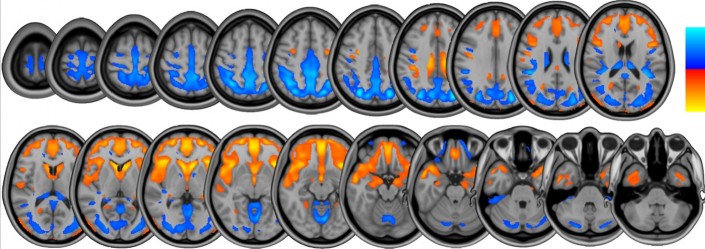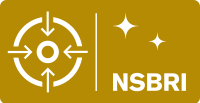Sensorimotor Adaptation Team

Blue illustrates regions of gray matter volumetric increases and orange reflects decreases occurring with long duration, head down tilt bed rest.
 Astronauts on long-duration space exploration missions will experience gravitational transitions, as well as extended periods of micro- and fractional gravity, with associated adaptation in their sensory and motor systems. Disorientation, vestibular-autonomic responses, and changes in vision, proprioception, cognition, balance and motor control may lead to impaired performance and compromised mission success.
Astronauts on long-duration space exploration missions will experience gravitational transitions, as well as extended periods of micro- and fractional gravity, with associated adaptation in their sensory and motor systems. Disorientation, vestibular-autonomic responses, and changes in vision, proprioception, cognition, balance and motor control may lead to impaired performance and compromised mission success.
In addition to identifying individual risk factors, the Sensorimotor Adaptation Team examines sensory systems, their interactions, and integration with the brain and motor behavior relevant for long-duration space missions. Research to understand fundamental physiological and biomolecular processes is complemented by development of personalized countermeasures, with particular emphasis on high priority gaps and operational needs. The Team’s research has terrestrial benefits for those suffering from an array of neurosensory and motor conditions, especially in the elderly where falls are endemic.
Leaders
Team Leader:
Ajitkumar P. Mulavara, Ph.D.
Universities Space Research Association
Associate Team Leader:
Rachael D. Seidler, Ph.D.
University of Michigan
Impact in Space
The Sensorimotor Adaptation Team is developing countermeasures to mitigate sensorimotor risks associated with adaptation to spaceflight and readaptation to gravitational environments. The Team’s goal is to define the mechanisms of adaptation, quantify the magnitude and duration of decrements in crew performance and the impact on safety, and develop practical standards and countermeasures. Projects address sensorimotor risk areas including disorientation, manual control, movement and space motion sickness.
The Team’s anticipated deliverables for spaceflight include:
- Setting requirements for vehicle displays and controls for landings;
- Techniques for predicting disorientation and manual control problems due to vehicle accelerations, dust grayout and astronaut head movement;
- Developing spatial-ability assessment tests and visual displays for astronaut training on the remote operation of robotic systems;
- Gait-adaptability training and strength/balance training methods to improve post-flight balance and movement;
- More efficient drugs for space motion sickness;
- Development of mathematical models to predict spatial disorientation in altered gravitational environments;
- Development of methods to create vertigo, using electrical stimulation, for potential use in landing and extravehicular activity simulations and training; and
- Enhancement of technologies to improve spatial orientation and navigation capability of astronauts exploring deep-space destinations.
Impact on Earth
Sensorimotor disturbances are not limited to spaceflight. They are associated with many clinical disorders on Earth and often accompany the aging process. Commercial, military and general aviation pilots are at risk from spatial disorientation. The Sensorimotor Adaptation Team’s research has applications for Earth use in the following ways:
- Balance training programs and sensory-feedback systems will be useful in clinical rehabilitation, potentially aiding in the prevention of falls, particularly in the aging population;
- Spatial orientation technologies can be used to support personal navigation on Earth;
- Spatial disorientation monitoring and analysis tools for use in low gravity can be used by aircraft pilots; and
- Systems mimicking sensorimotor effects could be used for vestibular rehabilitation and pre-habituation prior to surgical intervention.





